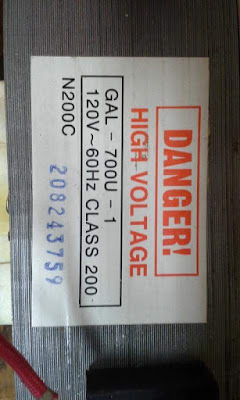PVC Telescope: A Modular Optics Lab in a Tube!
Reflector telescopes use mirrors, refractors use lenses. To make a reflector you precision grind a mirror, for a refractor you need to play with at least two lenses-more of you want color correcting and distortion minimizing qualities.
It's quite simple really. Light gets focused between two lenses: the main objective lens at the end of the tube that gets pointed into the sky and the eyepiece. However different colors of light are different wavelengths. Different wavelengths focus at different places.
This makes your telescope into a prism: colorfully blurry!
When a nice focused green wavelengths falls perfectly on the eyepiece that means the red and blue waves are a little too in front of and too past the eyepiece to be on focus. This problem is called chromatic abberation and some really expensive refractor telescopes have it. It's something that you can: get used to; hate and buy a reflector (mirror) telescope; or pay even more money to correct. Adding additional lenses can bring the red and blue to the same focus point, this is called an achromatic len(s).
Now, to be clear "blurry" isn't exactly accurate as a description of chromatic abberation. The views is very crisp, but tripled slightly: you'd see the moon with a red moon slightly misaligned with a blue moon slightly misaligned with a yellow moon. All very crisp but distracting.
Many telescopes that are refractors (lenses not mirrors) show this tripled misalignment just along the edges of bright objects as color fringes and flares. Even really, really, really expensive refractors can have a little color fringing from chromatic abberation.
If you want to see chromatic abberation on your own just aim a pair of binoculars at an electrical power line hanging from a telephone pole. Of you hey just the line in focus with a bright, clear sky behind it you'll notice yellow and purple highlights along the edges of the line. Shiny highlights on the line may also have weird color aberrations. The better the optics, the less color fringing.
The glass of the lenses absorbs and passes light waves through at different rates. Reflector telescopes (mirror) bounce light off a mirror-the mirror reflects the light, but doesn't absorbs it. The light bounces and isn't passing through it so reflector telescopes don't have problems with chromatic abberation.
I wanted to build a refractor of my own design that allowed me to swap different lenses in and out to experiment with correcting various flaws including chromatic abberation. A modular optics laboratory in a tube! I decided to use PVC and headrd to Home Depot with calipers, pad, pencil and a tape measure.
But first I needed a nice lens. I bought a cheap one for $7 on Amazon. It was an Ajax Scientific Polished Glass Bi-Convex Spherical Lens, 100mm Diameter 500mm Focal Length. Nice lens!
1x 3" PVC flat top cap (not the domed/rounded bubble top)
3x 3" PVC 3x3 repair couplings (that are smooth inside, not with an internal ridge)
1x 3" PVC 3"x2 foot foam core pipe
1x 4" PVC 4"x2 foot foam core pipe
A big objective lens
Wood saw to shorten both pipes (hack saws don't cut straight with PVC easily)
Telescope eyepiece or bi-convex lens or eyepiece from binoculars
Black spray paint
A big ring cutter drill bit to cut a hole for eyepiece or lens (.965", or 1.25", or 2" or whatever your focuser needs if you're using a focuser instead of just plunking an eyepiece into the hole in the end cap).
At Home Depot I bought a 4" PVC white pipe and painted the inside black to reduce glare and increase contrast. One insert (repair coupling) with hole in the center pushed in followed by this lens followed by another insert. These trap the lens in the tube.
Another insert with hole at other end of pipe allows a 3" PVC pipe to slide in and out to adjust focus. At the end of the 3" pipe pit a 3" end cap with a hole in it to hold an eyepiece of to fit a telescope rack focuser.
Extend the tubes for close focus like neighbor's house, push them in (shorten) for father focus like the sky, moon and stars. All with so much chromatic abberation they looked like a psychodelic Andy Warhol print! My first view was of a street light a couple blocks away. The abberation was so bad it looked like a bunch of multicolored poles barely touching, not merely "misaligned" slightly.
Medium distance focus is about 20" from lens to eyepiece (focal length is 500mm f/5). So you'll have to cut the tubes to short lengths. This shows the effects of differing focal lengths on telescope designs: magnification (greater or less zoom with the same eyepiece), brightness (f-stop/speed) and field of view (wide angle).
The magnification (zoom-in) of a telescope equals its focal length divided by the focal length of whatever eyepiece you have in it. Every time you double the magnification you loselose 50% of the sharpness of focus and 25% of the brightness!
If you're looking at something bright like a planet or the moon that's fine-but for faint nebulae and galaxies it might make you unable to even find your target in the sky.
Useful magnification is twice the diameter of the objective (lens or mirror) in millimeters. 50mm lens x 2 = 100x top magnification.
1000mm focal length ÷ 100x = 10mm eyepiece needed.
Remember though: my design slides in and out so I can change my focal length slightly, but not my objective diameter (unless I swap out the front lens). I can change my magnification by changing eyepieces.
My telescope has a 100mm diameter objective lens. Twice 100mm equals 200x maximum magnification.
Its 500mm focal length ÷ 200x desired magnification = 2.5mm eyepiece needed. Those are expensive, but I've got a wonderful 3mm eyepiece that gets me close enough. However, in my larger telescope that same eyepiece will give me 400x magnification! Everything effects everything else in the optical chain.
Too close...zoom out or claws out!
Once you've played with focal length and eyepieces you can add a concave lens in between to try and correct for chromatic aberration, etc. Alternatively you can use a double or bi-concave lens instead of an eyepiece. This is really a telescope laboratory in a conveniently simple modular package!
So less than ten bucks for the lens and about thirty-five for the pvc if you don't have it around the house compared to big bucks for a 4" refractor astrograph telescope (plus you'll have to scrounge up a focuser and maybe some other lenses to experiment with correction).
It's quite a large and heavy beast!
Here it is mounted on top of a rather long, metal, 1970s Tasco. PVC is incredibly heavy, but if you take care and balance it well it moves easily. Even on a terrible mount. Tasco had the worst mounts in the business, but an even bigger tragedy were their eyepieces. They were the small 0.965" size and atrocious!
I bought an adapter for $9 on Amazon that is a 90° elbow: one end fits into the 0.965" opening in the telescope; the other side has a 1.25" hole that accepts professional 1.25" eyepieces (but not 2" Diameter ones). If you have an old Tasco buy the adapter and some cheap 1.25" eyepieces and you'll be blown away! A 20mm, 12mm and 9mm are a fine set for most Tascos. The mount will still be criminally terrible: jerky, wobbly, prone to falling, etc.
I also took some old slide and film projector lenses and converted them to use as eyepieces. They have varying outside diameters so some had to be spun up on a metal lathe and smallerized, others were too narrow and needed tubing or duct tape wrapped around them for a snug fit.
You can find old lenses like this cheap or free all over the place. Even if you're using a store bought telescope it's neat to increase your eyepiece collection for free and have fun doing it!
Woah, the colors! Chromatic-Cat says meow!



















































